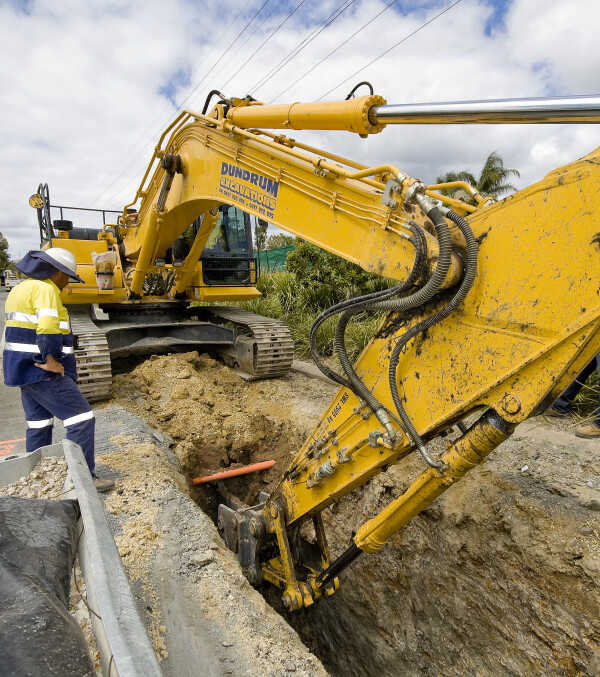|
Customer: Solomon Islands Water Authority Contract: Construct Location: Honiara, Solomon Islands |
Fast Facts:
|
We've successfully delivered the new Kukum Highway Sewer Pipeline Project for the Solomon Islands’ Water Authority, dealing with traffic, hard ground and unexploded World War II ordinance.
Sometimes referred to as the ‘Telekom to Fisheries’ project, the new pipeline alignment runs from the Ministry of Fisheries building through the Ranadi Roundabout to the Telekom building. The project is the first stage in a long-term plan to improve sanitation in Honiara, the nation's capital, which is located on the largest island, Guadalcanal.
One kilometre of gravity-fed pipeline and half a kilometre of pressure main, manholes and lateral connections have now been installed alongside Kukum Highway. The highway is a main arterial road, and the traffic management needed to build the new pipeline included closing one lane to traffic, for the work to take place safely, while managing traffic flows in the other lane.
Our trenching methodology included a combination of trench shields and waler-supported sheet piles. At the western end of the project, and the deepest section, the gravity pipeline was installed seven metres below ground. The sheet-piled trench provided stability, safety and helped the team manage the groundwater levels. In the shallower sections, where the excavation was less than 4.5 m deep, the team used a trench shield shoring system.
Challenges
The project has provided many challenges for the team. The crew successfully managed hard ground conditions, deep excavations, and a high-water table, which added complexity to the job. But the most unique complication was the high risk of uncovering Unidentified Explosive Objects (UXO) during excavation, old ordinance left in the ground after World War Two.
The team worked with the Solomon Islands Explosive Ordinance Department to ensure the risks of unexploded objects were safely managed. With the aid of a qualified UXO Surveyor, every metre of ground excavated was scanned to locate any UXOs. If a UXO was identified, then an expert from the department would remove it before work could continue. This process affected the pace of excavation, but was is the safest way for work to continue.
Stages 6, 5, and 2 were completed at the end of 2024, and the team completed Stages 1, 3 and 4 in early 2025, receiving Practical Completion in May 2025.








